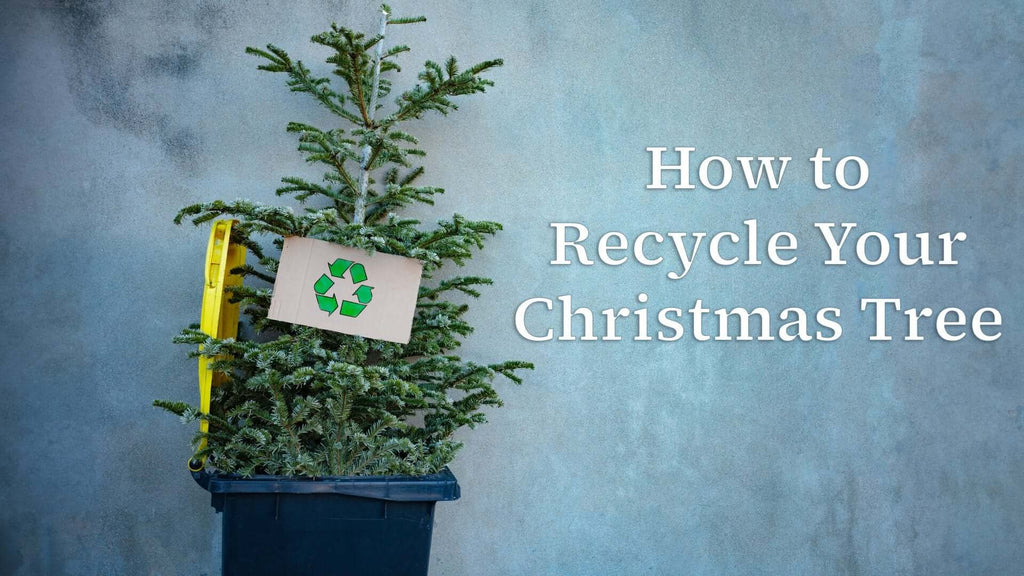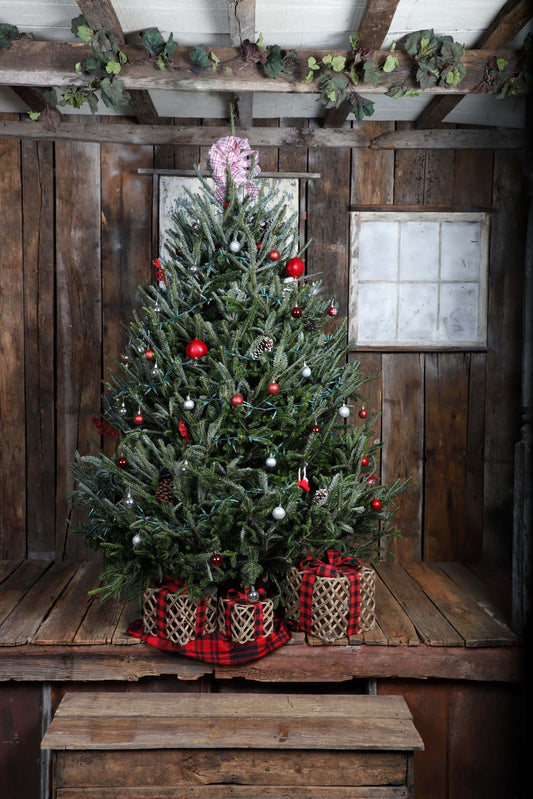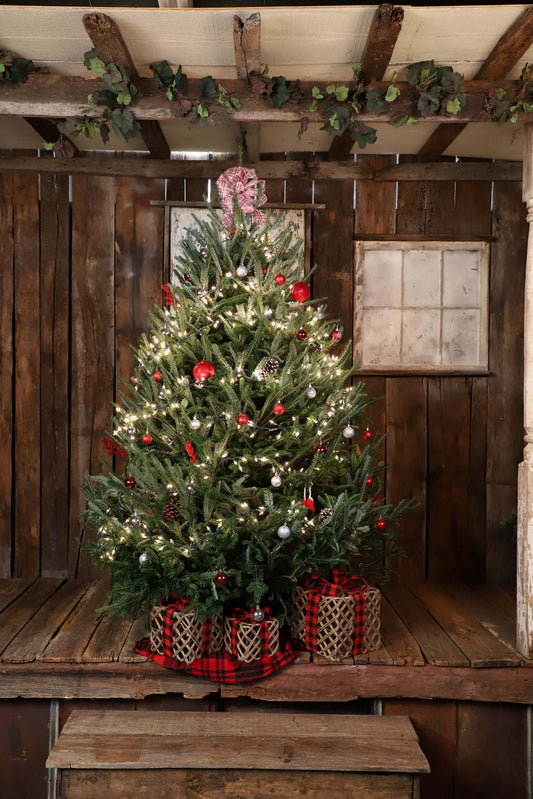How to recycle your Christmas tree
As we embrace the festive spirit, it's crucial to consider the environmental impact of our traditions. One significant aspect is the disposal of Christmas trees after the celebrations are over. Instead of simply discarding your tree, why not recycle it and give it a new purpose?
In this informative guide, we'll explore various methods of recycling your Christmas tree, helping you make a positive difference to the planet.
Why Recycle Your Christmas Tree
The environmental impact of sending Christmas trees to landfills is significant and often overlooked. When trees are disposed of in regular trash, they take up valuable space in landfills that could be used for more sustainable waste management practices.
By choosing to recycle your Christmas tree instead, you can make a positive impact on the environment. Let's understand how.
Resource Conservation
Christmas trees are valuable natural resources. They have already been grown, nurtured, and harvested for the holiday season. Recycling your tree allows it to be repurposed, extending its usefulness and conserving valuable resources. Rather than being treated as waste, the wood and organic material from recycled trees can be used in various beneficial ways.
Christmas trees can also provide fish habitats in lakes, ponds, and rivers. Once sunken, the trees become havens for freshwater wildlife, including small insects, snails, and mussels. The tree trunks and branches become a nursery for small warm water fish such as bass, crappie, and bluegill.
Extended Life Cycle
Recycling your Christmas tree gives it a new purpose and extends its life. Instead of being discarded and forgotten, your tree can be transformed into something useful. Whether it's turned into mulch, compost, or used for various other applications, recycling provides an opportunity for the tree to continue its journey and serve a new function.
Supporting Sustainable Practices
By actively participating in tree recycling programs, you support sustainable waste management practices in your community. When individuals recycle their Christmas trees, it encourages local authorities to invest in and expand recycling initiatives. It sends a message that the community values sustainability and is committed to reducing waste and environmental impact.
Preparing Your Tree for Recycling
Before recycling your tree, it's essential to remove all ornaments, lights, and tinsel. These items cannot be recycled and can hinder the recycling process. Ensure your tree is free from any non-organic decorations to make it suitable for recycling.
Check with your local recycling programs or services to understand their specific requirements for tree preparation. Some programs may require the tree to be cut into smaller pieces or placed in designated bags.
Local Recycling Programs and Services
Many communities offer Christmas tree recycling programs to make the process convenient for residents. These programs vary depending on your location. It is essential to research and find out what options are available near you.
Check with your waste management department to get information about collection methods, pickup dates, and any specific guidelines or restrictions in place. Some programs provide curbside collection, while others may have drop-off locations for tree recycling.
For those living in coastal areas, Christmas trees can help prevent coastal erosion by trapping wind-blown sand to build up sand dunes. The branches of the trees trap sand and help dunes form, protecting low-lying areas from coastal flooding. The trees act as a natural barrier to prevent dunes from falling apart, providing stability for fauna to grow.
DIY Recycling Ideas for Your Tree
1. Mulching
One of the simplest and most beneficial ways to recycle your Christmas tree is to turn it into mulch. Chip or shred the tree into small pieces using a wood chipper. Spread the mulch around your garden or landscaping beds.
The mulch helps retain moisture in the soil, suppresses weed growth, and provides insulation for plant roots during winter.
2. Composting
If you have a compost pile or bin, consider adding small pieces of your Christmas tree to the mix. Cut the branches into smaller sections and remove any large pieces of bark.
The organic material of the tree will break down over time, enriching the compost with nutrients. Avoid adding too much material at once, as it may take longer to decompose. Mix it with other compostable materials such as kitchen scraps and yard waste for a balanced compost pile.
3. Crafting
Embrace your creative side and repurpose tree branches for various crafts. Cut smaller branches into different lengths to create unique wreaths, garlands, or decorative centerpieces.
You can decorate these creations with pinecones, ribbons, or ornaments to add a festive touch. Crafting with your tree branches allows you to keep the holiday spirit alive and showcase your DIY Christmas skills.
Other Tree Recycling Options
1. Donation
Consider donating your Christmas tree to organizations that can make use of it for landscaping or habitat restoration projects. Contact local parks, nature centers, or conservation groups to inquire if they accept tree donations.
They may use the trees for erosion control, creating wildlife habitats, or enriching the soil in certain areas. Donating your tree not only helps the environment but also supports the efforts of these organizations.
2. Community Initiatives
Some communities have special initiatives that recycle Christmas trees on a larger scale. They may collect and chip the trees, turning them into wood chips used for trails, playground surfaces, or community landscaping projects.
Check if your community has such initiatives and participate by dropping off your tree at designated locations. By supporting these programs, you contribute to the sustainability of your local area and help create a greener community.
3. Tree Recycling Centers
Many areas have designated tree recycling centers where you can bring your Christmas tree for proper recycling. These centers are equipped with specialized machinery to efficiently process and recycle trees.
Check with your local waste management or environmental services department to find out if there are any tree recycling centers near you. Use these centers to ensure your tree is recycled in the most effective and environmentally friendly manner.
In conclusion, recycling your Christmas tree is an easy and impactful way to contribute to environmental sustainability. By repurposing your tree, you can help conserve resources, reduce waste, and limit greenhouse gas emissions.
Remember to prepare your tree properly by removing all decorations and exploring the recycling programs and services available in your area. Embrace DIY recycling ideas, such as mulching or composting, to give your tree a new purpose at home.
Consider donating your tree or utilizing community initiatives if those options are available. Let's all make a conscious effort to recycle our Christmas trees and create a greener, more sustainable holiday season for generations to come.

















